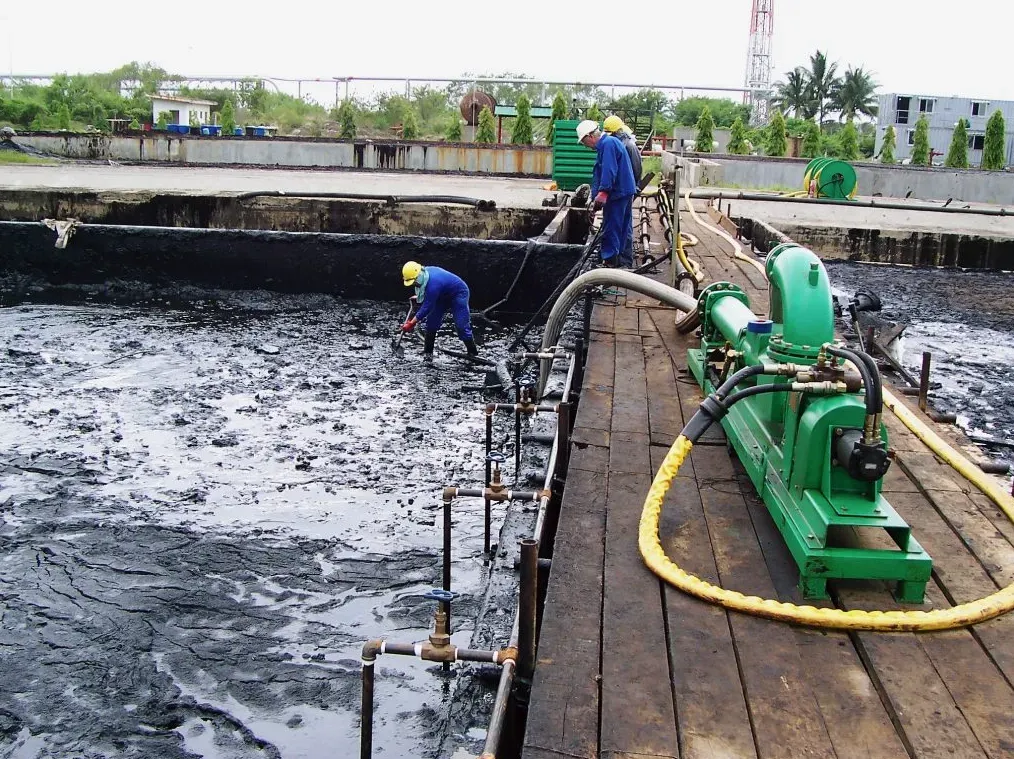What is oil sludge treatment process?
Currently, waste oil sludge is primarily treated through methods such as incineration, solvent extraction, landfill, and biodegradation. These approaches often result in wasted petroleum resources, incomplete treatment, land occupation, and secondary pollution. At present, the preferred methods are using pyrolysis plants and distillation machines to process oil sludge.
Next, I will introduce the oil sludge treatment processes using pyrolysis plants and distillation machines.
Oil Sludge Treatment Process of Pyrolysis Plant
Oil sludge comes in various forms, including solid, semi-solid, and liquid. Each form requires different treatment processes, feeding methods, and equipment. Solid and semi-solid oil sludge can be processed with a pyrolysis plant. Through a low-temperature pyrolysis process, oil gases are released from the sludge and then cooled into crude oil via the cooling system. Solid oil sludge can be fed directly using an automatic feeder, while semi-solid sludge, having some fluidity, requires a screw conveyor for feeding.

Oil Sludge Treatment Process of Distillation Machine
Liquid oil sludge can be processed using a distillation machine. During the process, oil gases are evaporated, oil residues are filtered out, and the gases are then cooled into crude oil through the cooling system. The liquid sludge can be directly pumped into the distillation machine using an oil pump.
Final Products from Oil Sludge
After treatment with these devices, oil sludge is converted into crude oil, ash, and water. The crude oil can be used directly. The ash can be used as landfill or as a material for brick-making, which both conserves oil resources and addresses environmental pollution.
Therefore, different forms of oil sludge require different treatment processes. We will recommend the appropriate equipment based on your specific oil sludge situation. For any questions, please contact us directly.


